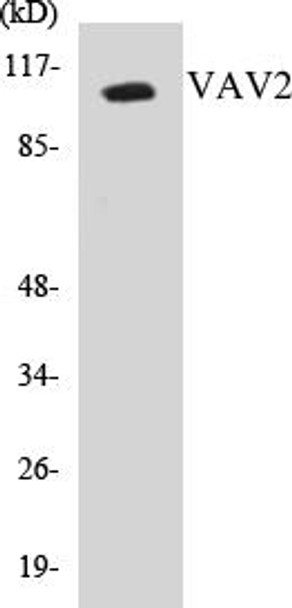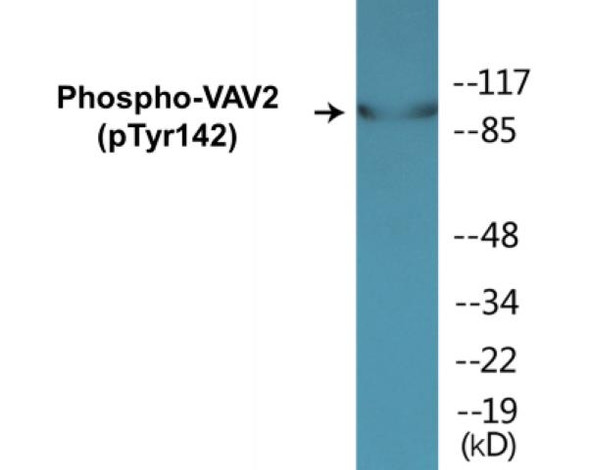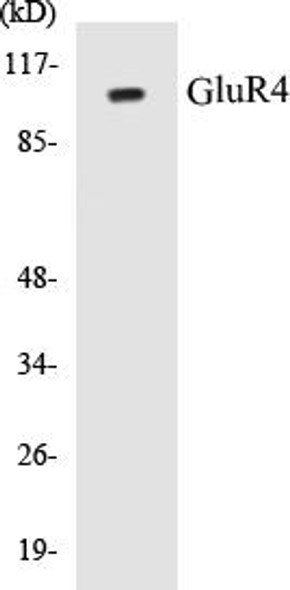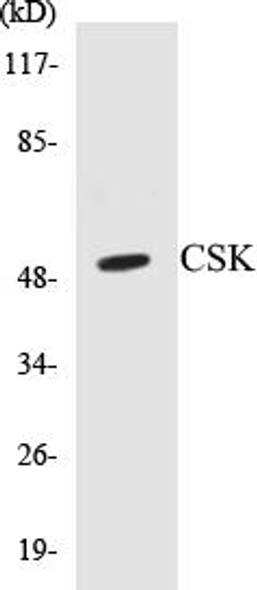Description
VAV2 Colorimetric Cell-Based ELISA Kit
The Vav2 Colorimetric Cell-Based ELISA Kit is designed for the precise measurement of Vav2 protein levels in cell lysates and tissue homogenates. This kit offers high sensitivity and specificity, allowing for accurate and reproducible results, making it ideal for various research applications.Vav2 is a key protein involved in regulating cell signaling pathways, controlling processes such as cell migration, adhesion, and proliferation.
Dysregulation of Vav2 has been linked to various diseases, including cancer, immune disorders, and neurological conditions, making it a valuable biomarker for studying these conditions and developing targeted therapies.Overall, the Vav2 Colorimetric Cell-Based ELISA Kit is a reliable tool for researchers looking to investigate the role of Vav2 in disease pathogenesis and therapeutic interventions.
| Product Name: | VAV2 Colorimetric Cell-Based ELISA |
| Product Code: | CBCAB00900 |
| ELISA Type: | Cell-Based |
| Target: | VAV2 |
| Reactivity: | Human, Mouse |
| Dynamic Range: | > 5000 Cells |
| Detection Method: | Colorimetric 450 nmStorage/Stability:4°C/6 Months |
| Format: | 96-Well Microplate |
The VAV2 Colorimetric Cell-Based ELISA Kit is a convenient, lysate-free, high throughput and sensitive assay kit that can detect VAV2 protein expression profile in cells. The kit can be used for measuring the relative amounts of VAV2 in cultured cells as well as screening for the effects that various treatments, inhibitors (ie siRNA or chemicals), or activators have on VAV2.
Qualitative determination of VAV2 concentration is achieved by an indirect ELISA format. In essence, VAV2 is captured by VAV2-specific primary antibodies while the HRP-conjugated secondary antibodies bind the Fc region of the primary antibody. Through this binding, the HRP enzyme conjugated to the secondary antibody can catalyze a colorimetric reaction upon substrate addition. Due to the qualitative nature of the Cell-Based ELISA, multiple normalization methods are needed:
| 1. | A monoclonal antibody specific for human GAPDH is included to serve as an internal positive control in normalizing the target absorbance values. |
| 2. | Following the colorimetric measurement of HRP activity via substrate addition, the Crystal Violet whole-cell staining method may be used to determine cell density. After staining, the results can be analysed by normalizing the absorbance values to cell amounts, by which the plating difference can be adjusted. |
| Database Information: | Gene ID: 7410, UniProt ID: P52735, OMIM: 600428, Unigene: Hs.369921/Hs.689325 |
| Gene Symbol: | VAV2 |
| Sub Type: | None |
| UniProt Protein Function: | VAV2: a proto-oncogenic guanine nucleotide exchange factors (GEF) of the Dbl family. A GEF for the Rho family of GTP binding proteins. Expressed in most tissues. |
| UniProt Protein Details: | Protein type:GEF; GEF, Rac/Rho; Motility/polarity/chemotaxis Chromosomal Location of Human Ortholog: 9q34.2 Cellular Component: cytosol Molecular Function:guanyl-nucleotide exchange factor activity; protein binding; Rho guanyl-nucleotide exchange factor activity Biological Process: ephrin receptor signaling pathway; platelet activation; positive regulation of apoptosis; regulation of blood coagulation; regulation of cell size; regulation of gene expression; regulation of GTPase activity; regulation of small GTPase mediated signal transduction; signal transduction; vascular endothelial growth factor receptor signaling pathway |
| NCBI Summary: | VAV2 is the second member of the VAV guanine nucleotide exchange factor family of oncogenes. Unlike VAV1, which is expressed exclusively in hematopoietic cells, VAV2 transcripts were found in most tissues. Alternatively spliced transcript variants encoding different isoforms have been found for this gene. [provided by RefSeq, Aug 2008] |
| UniProt Code: | P52735 |
| NCBI GenInfo Identifier: | 212287930 |
| NCBI Gene ID: | 7410 |
| NCBI Accession: | P52735.2 |
| UniProt Secondary Accession: | P52735,Q5SYV3, Q5SYV4, Q5SYV5, Q6N012, Q6PIJ9, Q6Q317 A2RUM4, A8MQ12, B6ZDF5, |
| UniProt Related Accession: | P52735 |
| Molecular Weight: | 97,032 Da |
| NCBI Full Name: | Guanine nucleotide exchange factor VAV2 |
| NCBI Synonym Full Names: | vav guanine nucleotide exchange factor 2 |
| NCBI Official Symbol: | VAV2 |
| NCBI Official Synonym Symbols: | VAV-2 |
| NCBI Protein Information: | guanine nucleotide exchange factor VAV2 |
| UniProt Protein Name: | Guanine nucleotide exchange factor VAV2 |
| Protein Family: | Guanine nucleotide exchange factor |
| UniProt Gene Name: | VAV2 |
| Component | Quantity |
| 96-Well Cell Culture Clear-Bottom Microplate | 2 plates |
| 10X TBS | 24 mL |
| Quenching Buffer | 24 mL |
| Blocking Buffer | 50 mL |
| 15X Wash Buffer | 50 mL |
| Primary Antibody Diluent | 12 mL |
| 100x Anti-Phospho Target Antibody | 60 µL |
| 100x Anti-Target Antibody | 60 µL |
| Anti-GAPDH Antibody | 60 µL |
| HRP-Conjugated Anti-Rabbit IgG Antibody | 12 mL |
| HRP-Conjugated Anti-Mouse IgG Antibody | 12 mL |
| SDS Solution | 12 mL |
| Stop Solution | 24 mL |
| Ready-to-Use Substrate | 12 mL |
| Crystal Violet Solution | 12 mL |
| Adhesive Plate Seals | 2 seals |
The following materials and/or equipment are NOT provided in this kit but are necessary to successfully conduct the experiment:
- Microplate reader able to measure absorbance at 450 nm and/or 595 nm for Crystal Violet Cell Staining (Optional)
- Micropipettes with capability of measuring volumes ranging from 1 µL to 1 ml
- 37% formaldehyde (Sigma Cat# F-8775) or formaldehyde from other sources
- Squirt bottle, manifold dispenser, multichannel pipette reservoir or automated microplate washer
- Graph paper or computer software capable of generating or displaying logarithmic functions
- Absorbent papers or vacuum aspirator
- Test tubes or microfuge tubes capable of storing ≥1 ml
- Poly-L-Lysine (Sigma Cat# P4832 for suspension cells)
- Orbital shaker (optional)
- Deionized or sterile water
*Note: Protocols are specific to each batch/lot. For the correct instructions please follow the protocol included in your kit.
| Step | Procedure |
| 1. | Seed 200 µL of 20,000 adherent cells in culture medium in each well of a 96-well plate. The plates included in the kit are sterile and treated for cell culture. For suspension cells and loosely attached cells, coat the plates with 100 µL of 10 µg/ml Poly-L-Lysine (not included) to each well of a 96-well plate for 30 minutes at 37°C prior to adding cells. |
| 2. | Incubate the cells for overnight at 37°C, 5% CO2. |
| 3. | Treat the cells as desired. |
| 4. | Remove the cell culture medium and rinse with 200 µL of 1x TBS, twice. |
| 5. | Fix the cells by incubating with 100 µL of Fixing Solution for 20 minutes at room temperature. The 4% formaldehyde is used for adherent cells and 8% formaldehyde is used for suspension cells and loosely attached cells. |
| 6. | Remove the Fixing Solution and wash the plate 3 times with 200 µL 1x Wash Buffer for five minutes each time with gentle shaking on the orbital shaker. The plate can be stored at 4°C for a week. |
| 7. | Add 100 µL of Quenching Buffer and incubate for 20 minutes at room temperature. |
| 8. | Wash the plate 3 times with 1x Wash Buffer for 5 minutes each time. |
| 9. | Add 200 µL of Blocking Buffer and incubate for 1 hour at room temperature. |
| 10. | Wash 3 times with 200 µL of 1x Wash Buffer for 5 minutes each time. |
| 11. | Add 50 µL of 1x primary antibodies (Anti-VAV2 Antibody and/or Anti-GAPDH Antibody) to the corresponding wells, cover with Parafilm and incubate for 16 hours (overnight) at 4°C. If the target expression is known to be high, incubate for 2 hours at room temperature. |
| 12. | Wash 3 times with 200 µL of 1x Wash Buffer for 5 minutes each time. |
| 13. | Add 50 µL of 1x secondary antibodies (HRP-Conjugated AntiRabbit IgG Antibody or HRP-Conjugated Anti-Mouse IgG Antibody) to corresponding wells and incubate for 1.5 hours at room temperature. |
| 14. | Wash 3 times with 200 µL of 1x Wash Buffer for 5 minutes each time. |
| 15. | Add 50 µL of Ready-to-Use Substrate to each well and incubate for 30 minutes at room temperature in the dark. |
| 16. | Add 50 µL of Stop Solution to each well and read OD at 450 nm immediately using the microplate reader. |
(Additional Crystal Violet staining may be performed if desired – details of this may be found in the kit technical manual.)






